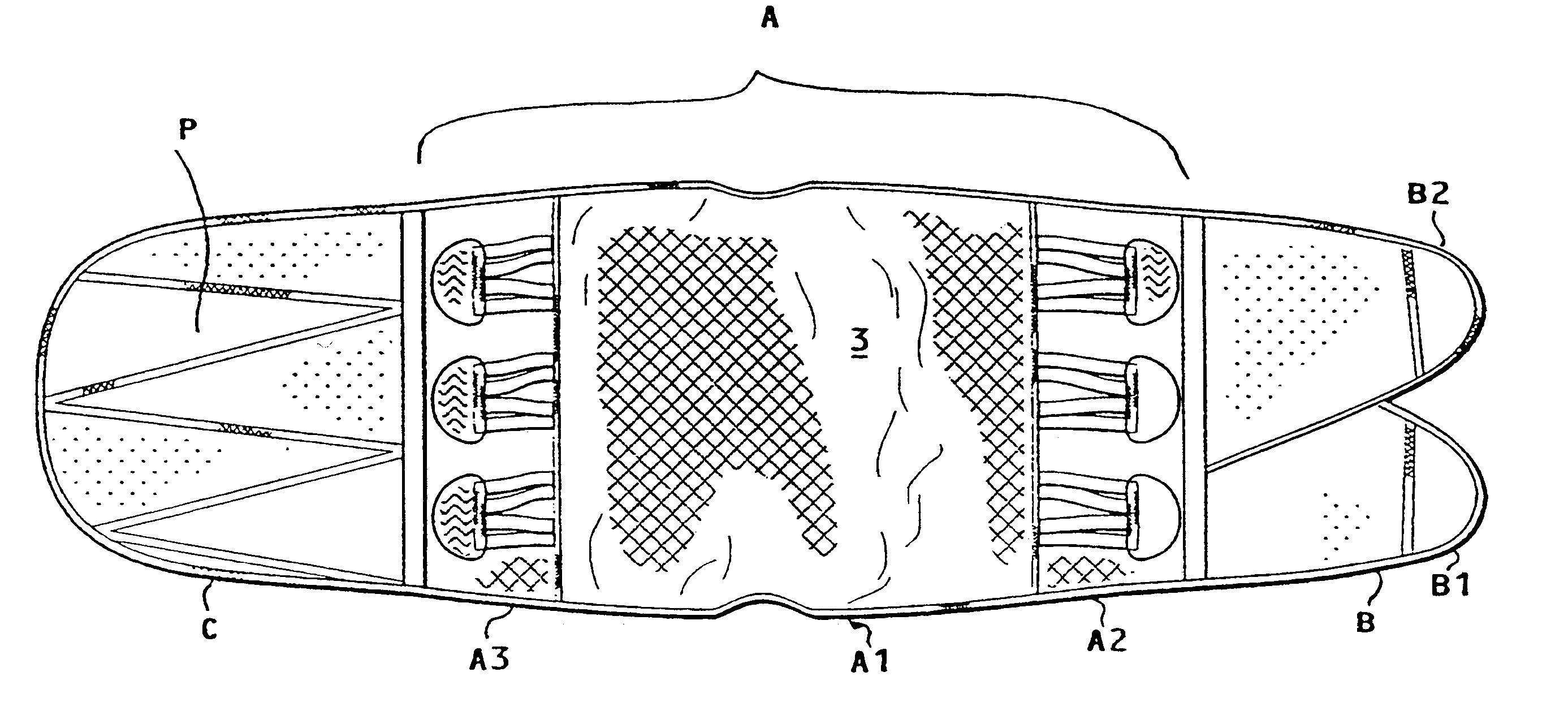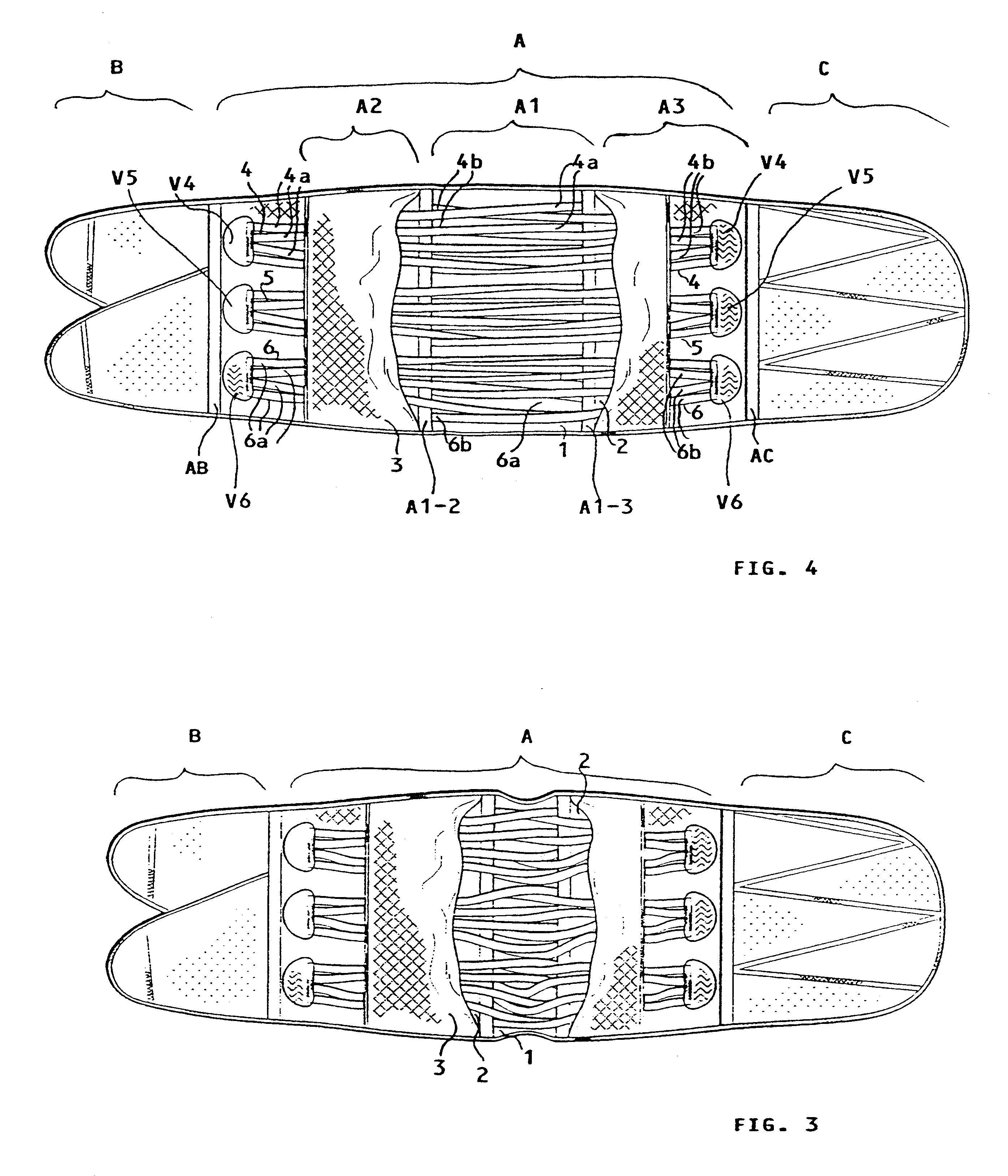Elastic waistband with transverse stiffeners and tautness adjusting lacings
a technology of elastic waistbands and lacings, which is applied in the field of elastic waistbands with transverse stiffeners and tautness adjusting means, can solve the problems of improper positioning of sanitary protections around the body, wear and tear of tubular elastic sanitary protections, and inability to meet the adjustment requirement of tautness adjustment by loosening or tightening lacings. , to achieve the effect of convenient adjustmen
- Summary
- Abstract
- Description
- Claims
- Application Information
AI Technical Summary
Benefits of technology
Problems solved by technology
Method used
Image
Examples
Embodiment Construction
With reference to the figures, wherein the same identifiers are used to identify the same parts, the elastic waistband of the invention comprises a main portion A essentially made of an elastic fabric, a first end portion B in the form of two triangle-shaped tails P1 and B2 joined together to the main portion A along a transverse sewing line. The free end tip of each portion B2 and B1 is provided with a Velcro fastener V1 and V2.
A second end portion C is joined to the other end of the main elastic portion A and has an outer surface in the form of a felt onto which the Velcro fasteners V1 and V2 of the two tails B1 and B2 may be engaged.
According to an important aspect of the elastic waistband of the invention, the elastic portion A of the waistband is composed of a central portion A1 of an elastic fabric 1 joined by sewing to two side portions A2 and A3 of a different elastic fabric 2 of lesser elasticity than the fabric 1 with which is made the central portion Al. In other words, t...
PUM
 Login to View More
Login to View More Abstract
Description
Claims
Application Information
 Login to View More
Login to View More - R&D
- Intellectual Property
- Life Sciences
- Materials
- Tech Scout
- Unparalleled Data Quality
- Higher Quality Content
- 60% Fewer Hallucinations
Browse by: Latest US Patents, China's latest patents, Technical Efficacy Thesaurus, Application Domain, Technology Topic, Popular Technical Reports.
© 2025 PatSnap. All rights reserved.Legal|Privacy policy|Modern Slavery Act Transparency Statement|Sitemap|About US| Contact US: help@patsnap.com



